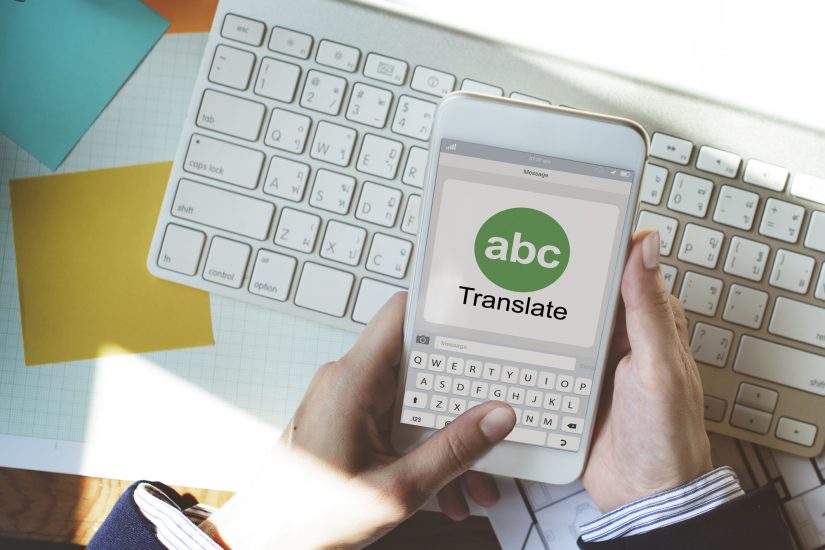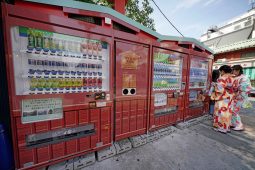When in Japan, Use Translation Tools Developed in Japan
The most useful language in Japan, other than Japanese, is certainly English. That being said, people often cannot understand each other well when asking for directions, when checking their railway connections, or when asking about a restaurant menu.
When faced with communication difficulties, services like Google Translate are useful for a great many languages including English. Also, even though they still make many mistakes, the evolving technologies of machine learning and neural networks have certainly improved a lot. In particular, Google Lens, can be used in all kinds of situations as it employs a smartphone camera to capture characters and automatically translate them.
However, language is strongly influenced by the culture and customs of the area where it is used, and only people who live there can properly use more subtle expressions. For that reason, there is some advantage to the local development of translation and interpretation tools. Accordingly, I will now introduce a number of translation apps and gadgets that have been developed in Japan.
Narita Airport’s Handy Interpreter App
For many overseas visitors to Japan, Narita Airport is their first experience of the country. Narita Airport’s operating company, working together with the telecommunications research organization National Institute of Information and Communications Technology (NICT), developed NariTra so that people unfamiliar with Japan would have no problems at the airport.
NariTra was a smartphone interpreter app with English, Chinese, and Korean language options. It could interpret both ways between those languages and Japanese. When you spoke into your smartphone, a voice would play in the language you had chosen, so it was a reliable aid for conversations. It could also translate input words. Later on, voice interpretation for Indonesian, and character translation for Thai, French, and Spanish were also added.
Although, NariTra was a useful app, it is sadly no longer available. For that reason, I recommend VoiceTra (https://voicetra.nict.go.jp/en/) which is produced by NICT and which NariTra was based on. Unlike NariTra, VoiceTra does not have the corresponding specialized proper nouns for Narita Airport. However, it is capable in 31 different languages.
Megahonyaku Resembles One of Doraemon’s Secret Gadgets
At locations, such as airports, where large numbers of people are gathered, it is important in the event of an emergency to be able to guide the users of the facility without any confusion. Moreover, information must be provided promptly in multiple languages. On such occasions Panasonic’s Megahonyaku (https://news.panasonic.com/global/topics/2016/45751.html), a megaphone furnished with an interpreter function, can play a vital role.
Megahonyaku is a megaphone that can translate spoken Japanese immediately into English, Chinese, and Korean, and then play it out repeatedly at a loud volume. If there is a sudden flight cancellation, or an evacuation in the event of a disaster, such information can be transmitted far and wide.
This device was trialled at Narita Airport between December 2015 and March 2016, and an improved model was fully introduced in 2017.
When a Smartphone is Unavailable, Use a Single-purpose Gadget
Using apps to interpret or translate is simple, but there are occasions when they are difficult to use such as if you need to talk while also using your smartphone to read a map. At such times, single-purpose interpreting/translation gadgets are advantageous.
POCKETALK (https://pocketalk.jp/en-us/) developed by Sourcenext is connected to a system that operates in a cloud environment and it can translate long sentences. It can be used with 3G and 4G mobile networks and also with Wi-Fi. The fact that it can cope with 74 languages is also encouraging.
If you are looking for a simpler gadget, how about Logbar’s ili (Iamili)? This is a one-way only translation device that can translate 4 languages: Japanese, English, Chinese and Korean. As its translation capability is limited to overseas travel, it has less functionality compared to POCKETALK. However, as it does not require an internet connection it can operate independently, it is easy to use handle, and its size is small.
Translation Devices for Hotels and Public Counters
Finally, I will introduce World Speak (https://www.kingjim.co.jp/sp/worldspeak/) which was developed by King Jim: a business machinery manufacturer that has many admirers and is well known for developing one unique gadget after the other.
World Speak is designed to be used at hotel reception desks or at the counters of public facilities. It is used as a pair of devices, and because of its desktop style there is no need to pass smartphones or other devices between the people in conversation. It is capable in 72 languages and so seems unlikely to prove deficient.








